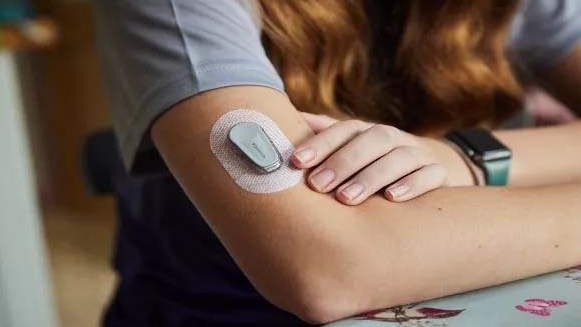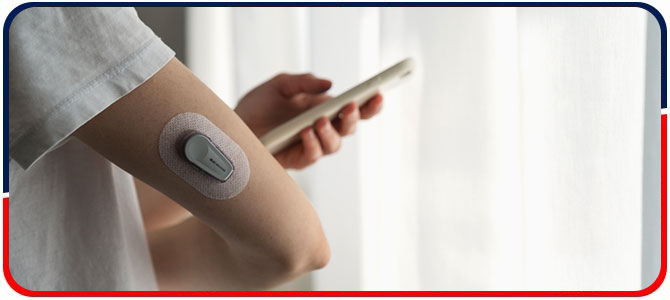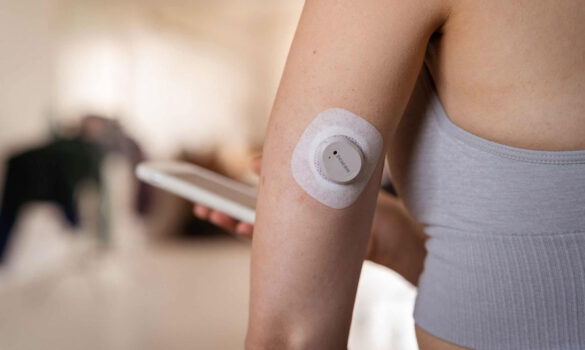How to Use Insulin Pumps for Better Diabetes Control?
- admin
- May 21, 2025
- 11:45 pm
- No Comments

Managing diabetes is more than a daily routine—it is a 24/7 balancing act of food, activity, stress, and medication.
While injections have long been the traditional route for insulin delivery, insulin pumps offer a more refined, flexible approach.
These small, wearable devices deliver insulin continuously, adapting to the body’s needs and reducing the rollercoaster of blood sugar highs and lows.
If you are considering this technology, or just want to improve how you use your pump, this guide by BestDietarySupplementforDiabetics walks you through everything you need to know about using insulin pumps for better diabetes control.
Article Index:
- Understanding Insulin Pump Therapy
- Benefits of Using an Insulin Pump
- Getting Started with Your Insulin Pump
- Integrating Continuous Glucose Monitoring (CGM)
- Customizing Insulin Delivery Settings
- Troubleshooting Common Issues
- Maintaining Your Insulin Pump
- Is an Insulin Pump Right for You?
- Conclusion
Understanding Insulin Pump Therapy
An insulin pump is a compact electronic device that delivers rapid-acting insulin through a small cannula inserted under the skin. It mimics the body’s normal insulin release with:
- Basal delivery: A steady, ongoing release of insulin to manage blood sugar between meals and overnight.
- Bolus doses: Quick insulin deliveries triggered before meals or to correct high blood sugar levels.
Instead of multiple daily injections, pump therapy offers more flexibility and tighter glucose control by using only fast-acting insulin.
According to the National Center for Biotechnology Information, insulin pump therapy (continuous subcutaneous insulin infusion, or CSII) has been shown to lower HbA1c levels and reduce glucose variability more effectively than multiple daily injections.

Benefits of Using an Insulin Pump
Why switch to a pump?
For many, the benefits are tangible and life-changing.
Here’s what insulin pump users typically experience:
- Improved blood sugar control: Consistent insulin levels mean fewer spikes and crashes, reducing complications.
- Lower risk of severe hypoglycemia: The precision of insulin dosing reduces the chance of overdosing.
- More freedom and flexibility: Eat when you want, exercise more freely, and make quick adjustments to your insulin.
- Better quality of life: Studies, such as those published in Diabetes Care, show pump users report higher satisfaction and improved emotional well-being.
For people with type 1 diabetes, and some with insulin-dependent type 2 diabetes, the benefits can be transformative.
Getting Started with Your Insulin Pump
Making the switch to a pump is a process, but with proper guidance, it is entirely manageable. Here’s how it usually unfolds:
- Medical evaluation: Your doctor or endocrinologist assesses whether you’re a good candidate for pump therapy based on your diabetes type, A1c history, and current regimen.
- Device selection: Choose a pump that fits your lifestyle. Some are tubed, while others are tubeless patch pumps.
- Training and setup: You’ll be trained on how to use the pump, set your basal and bolus rates, and troubleshoot problems.
- Monitoring: Frequent blood glucose checks or continuous glucose monitoring are essential in the early stages.
Health systems and diabetes educators often guide you through each step, helping with adjustments and offering support.
Integrating Continuous Glucose Monitoring (CGM)
Many modern insulin pumps work in tandem with CGMs, and the combination can be powerful. CGMs track glucose levels in real time, alerting you to highs or lows and providing trend data.
When paired with a pump, especially in hybrid closed-loop systems, insulin delivery can be automatically adjusted.
For example, if your CGM detects a downward trend, the pump might reduce basal insulin to prevent a low. This integration helps flatten blood sugar curves, reduces variability, and supports better long-term outcomes.
Clinical studies continue to show that CGM-pump integration reduces HbA1c and improves time-in-range metrics, particularly in type 1 diabetes.
Customizing Insulin Delivery Settings
One of the biggest advantages of insulin pumps is the ability to tailor insulin delivery to your exact needs.
Here is how:
- Basal profiles: You can program different rates for different times—higher during dawn (to handle the “dawn phenomenon”) and lower overnight.
- Bolus calculators: Most pumps come with built-in bolus advisors that calculate your dose based on carb intake, current blood sugar, and insulin on board.
- Temporary basal settings: When you’re sick, exercising, or eating differently, you can temporarily change your basal rate to match.
The ability to make these nuanced changes allows for much tighter blood sugar control than fixed injection schedules.
Troubleshooting Common Issues
Even with advanced features, insulin pumps can run into occasional hiccups. Here are some common issues and what to do about them:
- Infusion site irritation: Redness or swelling may indicate a need to change sites more frequently or rotate them better.
- Air bubbles in tubing: Can cause under-delivery of insulin. Prime the tubing carefully each time.
- Occlusions or alarms: Blockages in the line can stop insulin delivery. Follow your device’s troubleshooting steps and call support if needed.
- Adhesive allergies: Some users develop skin reactions to adhesives; hypoallergenic patches or barrier sprays can help.
Staying alert to these issues and resolving them quickly ensures consistent therapy and safety.
Maintaining Your Insulin Pump
Like any piece of technology, your insulin pump needs regular upkeep to function smoothly and safely.
While the maintenance is relatively simple, it is absolutely essential to ensure consistent insulin delivery and reduce the risk of complications.
- Change infusion sets every 2–3 days: This reduces the risk of infection, skin irritation, and insulin absorption problems. Rotating the site each time also helps prevent scar tissue buildup.
• Clean and inspect daily: Take a moment to wipe down your pump and tubing with an alcohol swab or soft cloth. Check for cracks, leaks, kinks, or air bubbles that might interfere with insulin flow.
• Battery and charging: Always keep your pump fully charged or carry spare batteries. A sudden power loss could interrupt insulin delivery, potentially leading to high blood sugar levels.
• Update firmware: Many modern pumps offer wireless updates. These upgrades may fix bugs, add safety features, or improve insulin algorithms for better control.
Skipping regular maintenance is not just an inconvenience—it can compromise your health. A little daily care can make a big difference in your diabetes management.
Is an Insulin Pump Right for You?
While pumps offer excellent control and convenience, they are not for everyone.
Here are some things to consider:
- Technology comfort: You would need to be comfortable managing a high-tech device daily.
- Lifestyle fit: Pumps require wearing or carrying a device at all times—some love the freedom, others find it annoying.
- Cost and insurance: Pumps and supplies can be expensive, though many insurance plans cover them.
- Commitment: You will still need to count carbs, monitor glucose, and stay engaged with your care plan.
If you are motivated and supported by your healthcare team, pump therapy can be a huge step forward.

Conclusion
Insulin pumps are game-changers for many people with diabetes. They offer a high level of control, adaptability, and convenience that injections simply cannot match.
From better blood sugar stability to improved quality of life, the advantages are clear when the pump is used correctly and consistently.
But it is not a magic solution—it still requires education, active participation, and support. With the right setup and mindset, an insulin pump can help you take charge of your diabetes rather than letting diabetes control you.
If you are considering a pump or want to get more from the one you already have, talk with your healthcare provider. Your path to better diabetes control might just be a few clicks away.
Note: This article is for informational purposes only and does not substitute professional medical advice. Always consult with your healthcare provider for personalized medical guidance.
References: